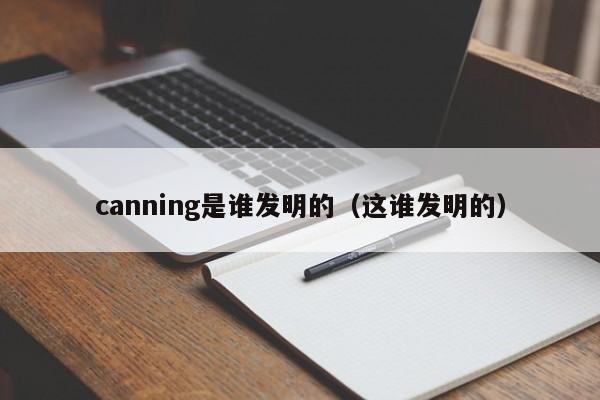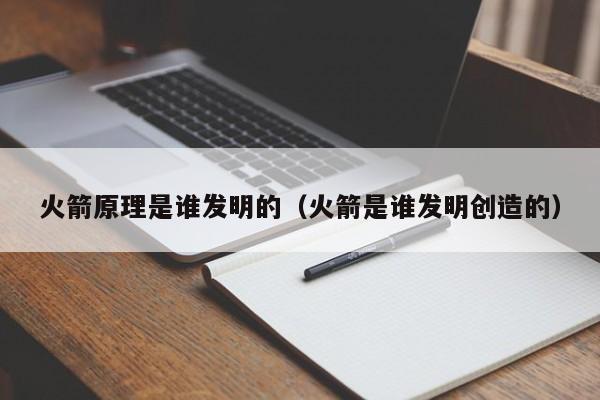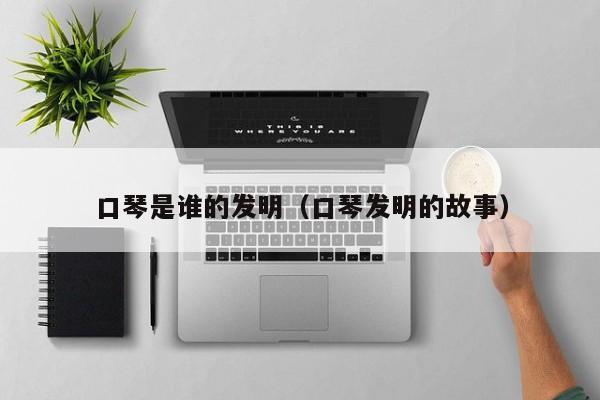canning是谁发明的(这谁发明的)
baike.aiufida.com 小编在本篇文章中要讲解的知识是有关canning是谁发明的和这谁发明的的内容,详细请大家根据目录进行查阅。
文章目录:
- 1、can 为什么是罐,容器,怎样造出的这个词
- 2、默斯·坎宁汉是谁?
- 3、找英文资料呀!高分,多多益善!!
- 4、最早出现罐装食品的是哪个国家
- 5、谁知道关于Candy(糖果)的问题?如:Do you know the candy’s history?
can 为什么是罐,容器,怎样造出的这个词
can [k??n,k??n] v.开罐aux.能,可以n.罐头,开罐器 can2 [k??n] n.1.(用金属或塑料制作的)容器,罐,桶 2.(马口铁或其他金属制作的)食品罐头,听头 3.[美国英语]罐头世猜食品陵返早;一罐 4.[美国俚语]监狱,监牢 5.[美国俚语]驱逐舰 6.[美国俚语]屁股;厕所 7.[美国俚语]一连串复杂而难以解决的问题 8.【高尔夫球】洞穴 9.[俚语]一盎司大麻 vt.1.把(食物等)装罐;把(食物等)贮藏在密封的罐头或坛子里:例句:Fruit is often canned in winter. 冬天的时候人们常常把水果装进罐里贮存起来.2.[俚语]停止;停用;放弃:例句:Can that noise! 别再发出那种噪音!3.[美国俚语]解雇;开除 4.[美国英语]将…送进监狱 5.录音 6.【高尔夫尺雀球】使球入洞 7.(在核反应堆中)用保护套把燃料包装起来 短语 1.a can of worms a.[美国俚语] b.复杂的问题(或情况);难解决的问题;一团糟 c.极度紧张不安的人 2.can it[俚语]住口;别吵;住手 3.carry the can (back)[英国俚语]单独承担责任,代人受过,背黑锅,做替罪羊 4.in the can a.[美国口语] b.(影片)已拍好(准备上映)的 c.(广播、电视材料)已录好(准备放)的 5.live out of cans靠罐头食品过活 6.open a can of beans[美国俚语]惹祸 7.take the can (back)=carry the can (back) 变形:vt.cannedcanning
默斯·坎宁汉是谁?
默斯.坎宁汉被称为“美国后期现代派”的杰出代表,他是连接古典现代舞与后期现代舞的关键人物。他凭借对舞蹈与众不同的理解和探索方式,形成了“纯哗洞颂舞蹈”的风格,颠覆着人们对颤塌舞蹈的传统认识,并试图为舞蹈重新定义
五十年代美国后现代舞关键人物,默斯·坎宁汉(merce
cunningh-am1919—)与现代音乐家约翰·凯奇(john
cage
1912—1992)也在《易经》的思想启发下,从机遇(chance)得到灵感,创作了一种音乐界翻成“偶然音乐”,舞蹈界翻成“机遇编舞法”的艺术,培养了一大批具有全球视野的艺术家,而“机遇”这种思想和方法竟成了欧美前卫艺术中舞蹈、音乐、美术各个领域的基石,使中国文化精神,一跃成为主宰西方现代艺术最乱郑高准则。
出自玛莎门下第三代的默斯·坎宁汉(merce
canningham
1919—)在玛莎舞团做过主要的舞者。他认为舞者所关心的应该只是纯粹的动作、速度、空间、线条。他不喜欢玛莎那种文学性、心理分析的舞蹈,默斯认为应该从舞蹈的本质来探索。

找英文资料呀!高分,多多益善!!
这是一篇有关电脑发明及介绍的短文,希望你满意!
You’ve probably known about computers your whole life. But computers have not really been around for very long. Computers started to become popular with big companies in the 1960s. Computers didn’t become widespread in homes and schools until the 1980s.
HOW DO PEOPLE USE COMPUTERS?
People use computers in many ways. Stores use computers to keep track of products and check you out at the cash register. Banks use computers to send money all over the world.
Computers help teachers keep track of lessons and grades. They help students do research and learn. Computers let you hook up to networks (many computers hooked together). They let you hook up to a worldwide network called the Internet.
Scientists use computers to solve research problems. Engineers use computers to make cars, trucks, and airplanes. Architects use computers to design houses and other buildings. The police use computers to track down criminals. The military uses computers to make and read coded messages.
Computers are not just desktops and laptops. Computers are everywhere around your home. There are tiny computers inside microwave ovens, television sets, and videocassette recorders (VCRs) or digital video disc (DVD) players. There are even tiny computers in cars to help them run better.
HARDWARE AND SOFTWARE
Computers need hardware and software in order to work. Your desktop or laptop and all the parts inside are called hardware. The central processing unit (CPU) makes the computer work. The keyboard, mouse, printer, and monitor are also pieces of computer hardware.
Memory chips are hardware that stores information and instructions. Information also gets stored on the hard disk drive.
The programs that run the computer are called software. The computer operating system is software that tells the computer how to run. Applications or programs are software that do certain tasks. Word-processing programs, for example, let you write school reports and letters.
HOW CAN COMPUTERS DO SO MUCH?
One reason that computers can do so much is that they have a special language that tells them what to do. Computer language has only two letters: zeros and ones. Computers can read these ones and zeros extremely quickly.
Each zero or one is called a bit. Eight zeros and ones together are called a byte. Bits and bytes get stored in computer memory chips. Every year, computer engineers make chips that can hold more bytes. The chips can hold more information. Programmers can write applications that can do more things.
WHO INVENTED THE COMPUTER?
Many inventions have contributed to the development of modern computers. French mathematician Blaise Pascal and other inventors in the 1600s began making machines that could add and subtract numbers. Wheels, levers, and other moving parts made these machines work. In the 1800s, British mathematicians Charles Babbage and Augusta Ada Byron, countess of Lovelace, worked on plans for machines that could store information on cards with holes punched in them.
American inventor Herman Hollerith made a machine that automatically totaled population figures for the 1890 United States census. His company joined with other companies to become International Business Machines (IBM) in 1924. Other inventors built better computers. But none of these early computers were digital—that is, none used the digits zero and one.
The first digital computer, called ENIAC, was built in the 1940s. It was huge. It was as big as a house. It had more than 18,000 glass tubes inside and weighed more than five elephants.
The first computer used by business was called UNIVAC. Big computers like ENIAC and UNIVAC were called mainframes. The desktop or laptop computer that you use today is much more powerful than those big machines.
In the 1940s, scientists at Bell Telephone Laboratories invented a tiny electric switch called the transistor. In the 1960s, scientists and engineers invented integrated circuits or computer chips. Computer chips cram millions of transistors into a space the size of your little fingernail. Computer chips allowed computers to be smaller.
Personal computers (PCs) were invented in the 1970s. Most PCs are meant to be used by only one person at a time. They are small enough to fit on a desk. The Altair 8800 was the first PC. Apple Computer made its first PC in 1977. IBM made its first PC in 1981.
WHO INVENTED COMPUTER PROGRAMS?
Computer programs are sets of instructions that tell a computer what to do. Many people worked on early computer programs. The first programs were very hard to write and understand. They were extremely long strings of zeros and ones.
American naval officer and mathematician Grace Murray Hopper in 1952 wrote the first program that turned English computer instructions into the strings of ones and zeros that make computers work. These programs are called compilers. In 1957, she helped develop the first programming language that companies could buy and use. It was called FLOW-MATIC. Hopper was also the first to use the word bug to mean a problem with a computer. She found a moth trapped in one of the computers she worked with. She taped the moth into her notebook and wrote, “First actual case of a bug being found.”
LATER DEVELOPMENTS
As computers have become more powerful and widespread, operating systems have become extremely complex. Few people can use a computer without one. Scientists at ATT developed an operating system called UNIX in 1969. UNIX and related operating systems such as Linux are popular at universities and among computer professionals. In 1975, Bill Gates and his friend Paul Allen wrote a program for the Altair 8800 and founded the Microsoft Corporation. Microsoft later developed the DOS and Windows operating systems used on many home and office PCs.
Computers keep getting smaller and more powerful. Personal computers that fit on a desktop today are more powerful than early “supercomputers” that filled entire rooms. Cell phones and watches contain tiny computers that can store information such as telephone numbers, addresses, and appointments. These devices allow you to surf the Web and play games. Many computer experts think that computers have only begun to make their mark on history.
最早出现罐装食品的是哪个国家
最早出现罐装食品的是法国。当时法国拿破仑为解决军队在作战时的食物供应问题,悬赏征求食物保藏的新方法,巴黎的一位糖食师傅阿培尔(Nicolas Appert)经过多年研究,发明了用玻璃瓶罐藏食品的方法。
接着1810年英国的手毕拦杜兰德(Peter Durand)发明了镀锡薄板金属罐,使罐装食品得以投入手工生产。其后 1864年法国的巴斯德(Louis Pasreur)发现食物的腐败是由微生物引起的,从而阐明了罐藏的原理,并科学的制定出罐头生产工艺。至此,罐头工业进入到现代世界食品工业当中。
扩展资料
1906 年上海泰丰公司设立了我国第毕胡一个罐头厂。随之,沿海各省也兴建起一些罐头厂。解放后,我国每年罐头食品产量成倍增长,目前全国产量已相当于1950 年罐头产量的200 倍。
现在罐头生产基本上实现了产品生产连续化和机械化。罐头品种已达300多种,罐头质量有了很大提高。其中青刀豆、蘑菇、午餐肉等罐头在国际市场上被公认为第一流产品。我国大部分罐头食品销售到欧洲、日本、加拿大、港澳等100多个国家和地区。数贺
参考资料来源:百度百科-罐头食品
参考资料来源:百度百科-罐装食品
谁知道关于Candy(糖果)的问题?如:Do you know the candy’s history?
A Brief History of Chewing Gum 泡泡糖的简史
Although the history of chewing gum is somewhat cloudy, there is evidence that the early Greeks chewed on a substance made from a resin of the Mastic Tree indigenous to Turkey.
In North America, Native Americans chewed on a substance that made from the resin of Spruce Trees. This practice continued until the early 19th Century and has been accredited as one of the first modern examples of Chewing Gum.
In the late 19th Century, Paraffin or edible wax was introduced as a substitute for Spruce Resin. Although this trend was short lived, we do see similar examples in modern candies such as Wax Fangs or Wax Lips or the retro candy classic, wax bottles.
Although flavors vary, all chewing gum consists of basic ingredients. The base is often made from resins from tropical trees as well as synthetic materials such as polyvinyl acetate, wax or rubber byproducts. The remainder is an amalgamation of corn syrups, sugars and hundreds of flavorings not to mention artificial colors.
The base is melted to a soluble liquid and then combined with the byproducts and stored in a solid block. It is then combined with colorings, flavors and sweeteners prior to packaging.
Bubble Gum, unlike regular chewing gum, has a base that consists of rubber latex and this is what gives it elasticity.
Early chewing gums were a challenge as they were hard to chew and the flavor, if any, lasted a very short time. As chewing gum became more popular, manufacturers began to experiment with new flavors and non-solid, often liquid, centers.
The advent of modern chewing gum is attributed to Mexican General, Antonio Lopez de Santa Anna, who became infamous as one of the participants of the Alamo As with most great inventions, it was more luck than planning.
After being exiled from Mexico, he introduced Thomas Adams Sr. to Chicle which is a substance derived from Sapota or Saodilla trees. Adams wanted to use the elastic ingredient in experiments to find ways to make more economical car tires.
Although he never was able to produce an economical tire substitute, in the end, he created one, if not the, first mass marketed chewing gums called Adams New York Chewing Gum. The first patent for chewing gum was awarded in 1869 although Adams did not create the first mass production chewing gum assembly line until 1871.
In 1880, William White combined corn syrup with Chicle and added peppermint extract thus creating the first flavored gum called YUCATAN. In the same period, Dr. Edward Beeman added pepsin powder and created a gum that was to serve as a "digestive aid." Beemans Chewing Gum, still available today, is a derivative of this discovery.
Chewing Gum became an important part of American culture and is often associated with being the catalyst behind the vending business. As early as 1888, vending machines appeared at subway stations in Manhattan offering different varieties of chewing gum.
In 1893, the William Wrigley Company, based in Chicago, IL, introduced two new chewing gums, Juicy Fruits and Wrigley's Spearmint, which to this day, remain some of the best selling chewing gums in the world.
In an attempt to compete with Wrigley's success, the American Chicle Company was established in 1899 and was an amalgamation of Yucatan Gum, Adams Gum, Beeman's Gum and Kiss Me Gum.
In 1899, Franklin V.Canning, a dentist, introduced Dentyne Gum and later that year, Chiclets were formally introduced. Both chewing gums are still available today although the formulas have changed.
The industry, fiercely competitive, saw little change until 1914. That year, following the success of Juicy Fruit and Wrigley's Spearmint, the William Wrigley Jr. Company introduced Doublemint Gum. Later that year, Thomas Adams introduced Adam's Clove Gum that to this day remains a retro candy "cult" classic!
American Chicle, in hopes of narrowing competition, purchased the company that invented Chiclets and went on to acquire the Dentyne Company while William Wrigley Jr. Co., in 1923, became one of the first candy companies to be listed on the New York Stock Exchange.
1928 was a very important year as Walter Diemer, an accountant for Fleer Gum, created the first formula for Bubble Gum. Fleer Gum had been searching for years to produce a formula that allowed bubbles to be blown that didn't stick and this is exactly what Diemer stumbled upon. It was also one of the first times that food coloring was used and pink became, and remains, the industry standard.
Fleer sold the rights for Dubble Bubble Bubble Gum to Marvel Entertainment Group and this gum was included in packages of trading cards until the late 80's. In 1988, Concord Confections, the largest manufacturer of bubble gum balls, purchased the rights to Dubble Bubble Bubble Gum.
In the early 1930's, Peter Paul Co., the inventors of Almond Joy and Mounds Candy Bars made a foray into the chewing gum market with the introduction of Charcoal Gum which was advertised, not so subtly, on the side of their candy bar boxes. They continued to make chewing gum until the late 1940's.
In 1938, two brothers started a company in Brooklyn called Topps Gum. The gum was sold at cash registers and is considered to the first "changemaker" as the marketing strategy was to get consumers to spend their change. This gum sold well but it wasn't until post World War II that they introduced the product that would take the nation by storm: Bazooka Bubble Gum!
This became, and remains, one of the best selling bubble gums of all time and in 1953, they decided to include the first comic in each piece. In 1950, Topps introduced the first trading card but it wasn't until two years later when Sy Berger, a baseball enthusiast, decided to make a card focusing exclusively on America's pastime.
Although Topps Company diversified into other non bubble gum novelty candies such as the Baby Bottle Pop, Push Pop and Ring Pop to name but a few, they remain one of the largest bubble gum manufacturers in the world with sales over 3 billion dollars!
The 1940's, the war years, saw the introduction of Rainblo Bubble Gum by Leaf Confectionary Co. and the William Wrigley Jr. Co., introduced Orbit specifically as a wartime product. Wrigley chewing gum was standard issue in the soldier's field rations, as was the Hershey Milk Chocolate Bar. Dubble Bubble also offered bubble gum squares that were included in ration kits.
In the 1950's, as consumers became more health conscious, Sugarless gum was introduced. The formula remained standard until 1970 when the FDA banned the active ingredient, Cyclamate. In 1983, Aspartame (known as Equal or Nutrasweet) began its use as a sugar free sweetener. Later, Sorbitol was introduced and is commonly used today as diabetics more readily tolerate it.
糖果的历史
The original idea behind sugar free gum is accredited to a dentist named Dr. Petrulis. Chewing gums contained Ammonia and he discovered that this substance counteracted acid that lead to tooth decay. Dr. Petrulis sold his company to the William Wrigley Co., and in the late 1960's, they introduced the first sugar free bubble gum called Blammo.
Wrigley Company continued to create some of the best-loved chewing gums and it was not until 1975 when then introduced Wrigley's Freedent Gum (designed not to stick to dentures) and then a year later, Wrigley's Big Red. In 1979, they introduced Hubba Bubble Bubble Gum and in 1980, they introduced Big League Chew (shredded bubble gum).
Ever keeping with the times, Wrigley introduced Extra Sugarfree Gum in 1984 and in 1994 they introduced Wrigley Winterfresh Gum. As of writing, the William Wrigley Jr. Company is the largest manufacturer of chewing gum in the world. Its headquarters are in Chicago, IL but it has factories in at least ten (10) foreign countries!
Today, there are hundreds of varieties of chewing gum and companies such as Amurol, a division of Wrigley, continue to push the boundaries with unique products such as Bubble Gum Tape, Bubble Beepers, Bubble Jugs and Ouch Gum to name but a few.
The history of candy dates back to the first man. The cave man created the idea of candy by eating honey combs and honey. In 1200 B.C. the first cocoa to be grown was grown by the Olmec Indians. Then the Maya natives used cocoa for money. In Maya tombs from 250 B.C they found artifacts of a chocolate drink.
The Spanish Explorers were the first Europeans to taste cocoa in the 1500's. In 1502 the first chocolate drink tasted by modern man was documented. In 1544 the first trace of cocoa in Europe was found. In 1556 the English were the first to sell cocoa. In the 17th century the first hot cocoa maker was made.
The first Dutch cocoa was made in 1828. In 1844 J.S. Fry and his sons were the first to make hard eating cocoa and in the same year the modern chocolate bar was made. In 1864 the first candy store was established. In 1876 Swiss chocolate was made. The first milk chocolate was made in 1879. In the 20th century The Hersey Kiss was made. In 1913 the chocolate bonbon was made. In 1929 the novelty of chocolate covered cherries were made. In 1926 vitamins were added to candy. Candy sales increased in 1997. In 2002 Hershey Industries became the number one candy maker.
通过上述对canning是谁发明的和这谁发明的的解读,相信您一定有了深入的理解,如果未能解决您的疑问,可在评论区留言哟。
版权声明
本文仅代表作者观点,不代表百度立场。
本文系作者授权百度百家发表,未经许可,不得转载。












评论